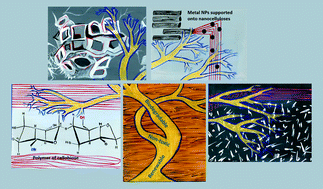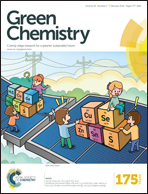Review: nanocelluloses as versatile supports for metal nanoparticles and their applications in catalysis†
Abstract
Nanocelluloses, derived from the biopolymer cellulose, are a class of sustainable functional nanomaterials featuring exciting properties. They have been extensively researched as key components in the design of super capacitors, pH-responsive reversible flocculants, aerogels, sensors, pharmaceuticals, chiral materials and catalysts. This review will focus on the applications of nanocelluloses in catalysis. The first part illustrates their use as support, stabilizer and/or reducing agent in the synthesis of various metal nanoparticle. Subsequently, the applications of these metal-hybrid nanocellulose composites in catalysis are reviewed. Finally, catalysis involving nanocelluloses, without the use of metal nanoparticles, is reviewed.



 Please wait while we load your content...
Please wait while we load your content...